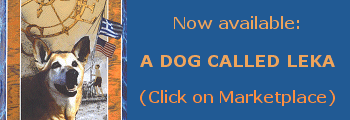Back up Calle Obispo we went, passing one dollar-only shop after another, heading for Hemingway's main hangout, El Floridita, which had a doorman who greeted us in English, "Come in, come in, this is where Papa drank mojitos." It was mid-day but the Floridita was crowded and raucous with music, prompting us to find a cab and negotiate a trip to the Museo Ernest Hemingway, the house in the town of San Francisco de Paula where Hemingway lived for most of his time on the island. Located southwest of Havana, the house (La Vigia) was a 19th century colonial residence that sat on a hill and was surrounded by lush Caribbean trees and foliage.
Hemingway
had donated the house and everything in it to the Castro government when
he decamped the island in 1953. The government, it turned out, had perfectly
preserved the place, treating it with care and respect, and not only because
it was a cash-cow for the state with anywhere from 200-1000 daily visitors
paying $3 admission ($5 to snap photos). As our guide told us, Hemingway
was held in great esteem in Cuba, with books like "For Whom the Bells
Toll" and "The Old Man and the Sea" being taught in school
and read by the masses.
La Vigia was called a museum but it was anything but stuffy and lifeless;
on the contrary, there was a magical quality to the house, perhaps because
it was so open, airy and sunny, with white, high-ceilinged rooms filled
with books and paintings. It was forbidden to enter the premises, we were
told, but it was possible to walk around the wide verandas and peer in.
Hemingway's obsessions were in full view: the walls of the living room
were decorated with bullfight posters and the stuffed heads of hunted
animals. In the center of the room stood two reading chairs separated
by a table holding dozens of bottles of booze with original contents still
intact. In a far corner was a dinner table set for three.
Hemingway's study allowed for even closer examination. Over his desk loomed
the massive head of an African water buffalo; on the desk itself sat pads,
pencils and pens--and a book: "Battle of the Rhinos." A nearby
bookcase held a fat dictionary on which was propped his portable typewriter.
On a table near a window was a yellowing copy of a magazine, "The
Field," and a collection of swords. There were family photos and
a shelf containing an assortment of shotgun shells. And books and more
books.
The bedroom
had twin beds, neatly made. Some of the furnishings were extremely valuable,
said our guide: Picasso ceramics, paintings by Juan de Gris. Then he began
to spout nonsense: "This was where Hemingway brought his girl friends,"
he said. "He didn't care if his wife objected." Later he insisted
that Hemingway hated to write letters (ignoring the fact that he was a
prolific correspondent).
The same guide was called aside by a museo official when a small group
of Russian tourists arrived. Though the massive Soviet presence in Cuba
had terminated in the early 90's, these VIPs were given special permission
to enter the house. They trooped from room to room, staring silently at
the things on display. When they exited the house, I asked them how they
felt about it. After the guide translated, they stared with hard, suspicious
faces at me. Finally one of the men spoke up: "It's magnificent."
There were gifts from Russia on sight in a tower room adjoining the one-story
main house, including a Sputnik model from a Soviet diplomat. The room
also held a collection of Hemingway's fishing rods and, under glass, a
signed copy of Calvin Coolidge's autobiography. On the walls was a gallery
of personal photographs: Hemingway as a boy in Michigan, Hemingway showing
off a huge marlin he had caught in local waters, Hemingway standing beside
Spencer Tracy and some of the crew involved in the filming of "The
Old Man of the Sea." Prominent was a snapshot of Hemingway delivering
his speech at the Nobel Prize ceremony in 1950 --and another of him posed
with Fidel Castro at a fishing competition in 1953. It was the only time
Hemingway and Castro had ever met.
Down the
hill from the house was a swimming pool and a nearby shed holding Hemingway's
fishing boat, The Pilar. Sitting up on blocks, the solid, unpretentious
boat was also perfectly preserved: paint fresh and gleaming, rails polished,
fishing rods and chairs in place. A group of Cuban schoolchildren sat
in the shade, making pencil and crayon sketches of the boat.
"You ought to talk to the captain of the Pilar," the guide suggested.
"He's still alive, you know."
On the way to Cojimar, where Captain Gregorio Fuentes lived, we worked
out that he had to be a good hundred years old. "His mind still works,"
the guide assured us. "If you give him ten dollars he will tell you
personal stories of Hemingway."
Cojimar was a fishing village with no fishing boats (they were all moored
elsewhere, in a security harbor), but there was a small Hemingway memorial
statue. Children pointed the way to Fuentes' home, a simple wooden shack
on the main street. My mind raced as I approached the front door, trying
to think of meaningful questions to ask him...only to be greeted by a
hand-written sign: "Mr Fuentes does not receive visitors."
Back in Havana I sought out a quiet bar to try and get over my disappointment.
The one I chose happened to have a small sign on the wall: "Hemingway
did not drink here."
